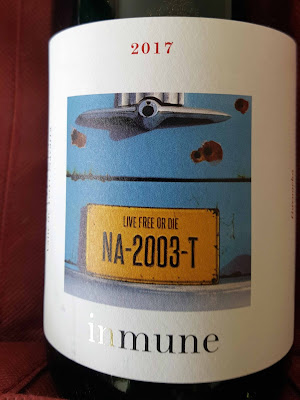Iberian Aces From Mary Pawle.
One Spanish Tinto. One Portuguese Branco.
Bodegas Pinuaga Tinto, Vino de la Tierra Castilla 2019, 13%, €13.15, Mary Pawle.
Colour of this Spanish red is a mid ruby. The aromas are full of red and darker fruit. Very promising and that promise is fulfilled on the palate. Vibrant, with fruit galore, expressive with a touch of spice, good acidity to balance. Young, yet with character, the blend is very approachable, all the way through to the finish. Your lips will tell you the tannins are still a factor. Nice touch of smoothness though in the mouthfeel. Very quaffable and should have no problem pairing with the suggested salads, tapas, pintos and bbq (serve at 12 degrees). Good idea to have a few of these bottles in the cellar or in your usual cool dark spot! Highly Recommended. Very well priced too by the way.
This wine comes from a single vineyard of 5 Hectare of Grenache and 3 Ha of old, Tempranillo bush vines. The Tempranillo clone is called Cencibel and it produces smaller grapes with very soft and silky skin and has a much longer ripening period. Hand harvested in early September, the wine is fermented with indigenous yeasts in stainless steel tanks.
In 1960, the first generation of Pinuaga winemakers established the winery in the village of Corral de Almaguer, province of Toledo.
Today, the second and third generation of the Pinuaga family, Valentin and Esther, maintain the old vines with much care and pride, following a minimal intervention philosophy, using natural and artisanal winemaking processes and recovering indigenous clones. The quality of the wines is driven by the characteristic of the soils, age of vines, grape variety and organic farming practices; all of these parameters are present in every wine, making them singular and unique.
Altitude is a key factor here, as it is in much of Spain. According to the World Atlas of Wine, “a good 90% of all Spanish vineyards lie at altitudes higher than any major French wine region” and this, especially in Castilla y Leon, helps maintain acidity enough to keep the wines relatively fresh. The altitude benefit means “growers can depend on cool nights to ‘fix’ colour and flavour in the grapes ripened during the torrid summer days”.
Casa De Mouraz Encruzado Vinho Branco DãO (DOC) 2016, 13%, €21.00 Mary Pawle Wines
+ selected Restaurants
Leading Portuguese winemaker Antonio Braga admits to falling in love with the Encruzado grape variety, the noblest white variety of the Dão: “It grows in complexity as it ages, is great for oak ageing. It has a wonderful gastronomic ability to cut through fatty foods. It is an autumn wine, a fireplace wine. It may not be in fashion but it is a wonderful variety, wonderful to work with.”
In 1997, Casa de Mouraz became the first biodynamic winery in the Dao. Portuguese grapes aren't that well known individually in this country. Encruzado, the grape here, is “potentially the best white grape of the DAO” according to Grapes and Wine. Barrel fermentation and lees stirring help bring out the character. It is indigenous and regarded as the most important white grape in the region and this particular wine has had eight months on fine lees with batonage.
Colour ion this 2016 vintage is a mid-straw. Aromas of medium intensity recall white fruits and citrus, floral notes too, and I noticed a slight whiff of a Riesling-like diesel. Fresh fruit flavours (apricot, peach), excellent mouthfeel, acidity enough to nudge it towards crisp and a decent citrus-y finish too. Mineral and floral, fresh and structured, it is quite harmonious and Highly Recommended.
The first thing you’ll note is that the cork is covered with a wax. Just remove that with the blade on your corkscrew. It is fairly soft but be careful! Alternatively, warm the top by rubbing it with the palm of your hand. Then plunge in the corkscrew as usual and it should all come away. If you get it right, just a little disc of the wax will come away with the cork. Video demo here.


























